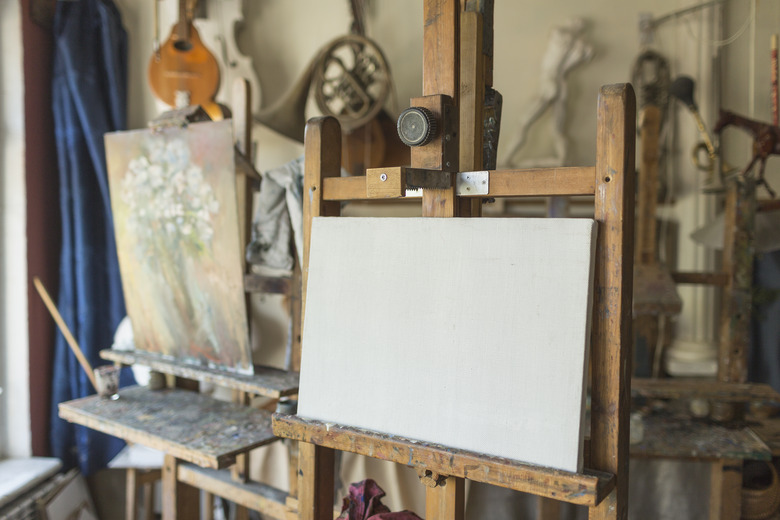Will Stretched Canvas Art Do Okay In A Bathroom?
We may receive a commission on purchases made from links.
Choosing art to hang in your bathroom can be tricky since bathrooms are so humid. You don't want the humidity to damage the art, but you want the bathroom to be aesthetically pleasing. While you can hang stretched canvas in a bathroom or kitchen, it is possible that it will undergo some damage over time. If the work of art is expensive or has sentimental value, then it is better to be safe than sorry and avoid hanging it in your bathroom.
Tip
You can hang a piece of stretched canvas art in a bathroom if you take steps to limit the potential damage, including maximizing bathroom ventilation and air circulation around the painting.
What Is Stretched Canvas Art?
What Is Stretched Canvas Art?
Stretched canvas art can be a print or an individually painted work of art. The canvas is stretched tight over wooden supports called stretcher strips. The canvas is attached to the wood frame with staples.
Canvas has been a popular medium for artists since the early 16th century. The canvas used to be attached to the stretcher strip with nails, and these can still be found on antique paintings.
Maximize Air Circulation
Maximize Air Circulation
Leave a small gap between the wall and the canvas artwork to improve the air circulation between the two. This will help reduce the moisture on the artwork, and it's more effective than hanging it flat against the wall.
Hanging the art as far as possible from the source of moisture, such as the tub or sink, does not ensure less damage. Steam can travel and will inevitably end up leaving some moisture on your art.
Ventilation Is Key
Ventilation Is Key
Try leaving the bathroom fan on while showering and bathing and leaving it on for an hour afterward to reduce moisture as much as possible. If you do not have a bathroom fan, open the window to provide better ventilation. This will limit the exposure the canvas has to steam and water damage.
Varnish Can Help
Varnish Can Help
If you are concerned about the canvas being exposed to humidity, then a protective varnish applied by professionals at a framing store or art shop could help. Alternatively, you could have a replica of the art made to hang in the bathroom and keep the original in a safer place.
You can also apply the varnish yourself. For example, Timeless Archival Print Varnish works well, and Winsor & Newton Galeria Acrylic Medium Matt Varnish is great for acrylic on canvas. The Wooster Gold Edge brush works well for varnish application.
Be sure to varnish the edges as well. To do so, you can prop the painting up on a box for easier application. Be sure to ventilate the room well when varnishing and protect the surface you are painting. You can also varnish the wooden frame to protect it.
Avoid Framing With Glass
Avoid Framing With Glass
While framing a canvas with glass as a protective layer may sound like a good solution, it doesn't work. Little droplets of water can get behind the glass and get trapped, especially if the bathroom is poorly ventilated. This can lead to mildew and mold, which creates a new problem.
Clean Away Mold
Clean Away Mold
If the canvas gets moldy from humidity, spray but do not saturate the front and back of the painting with Lysol spray, not the liquid. Wear a respirator that also protects your eyes to avoid inhaling the mold since this can be dangerous. When the canvas has dried, use a soft paint brush to remove the mold. Do not wipe the mold off the canvas. Be sure to brush the mold into a HEPA vacuum to remove it and keep it from circulating in the air. Repeat the process if necessary.
References
- Canvas Discount: Having Bathroom Canvas Art – What Are the Risks?
- Seaside Art Gallery: Gallery Wrap vs Stretched Canvas – What's the Difference?
- Decor Snob: Can You Hang Canvas Art in the Bathroom? Is it Safe?
- The New Orleans Conservation Guild, Inc.: Is Your Artwork Wet Or Damaged? Here's What to Do
